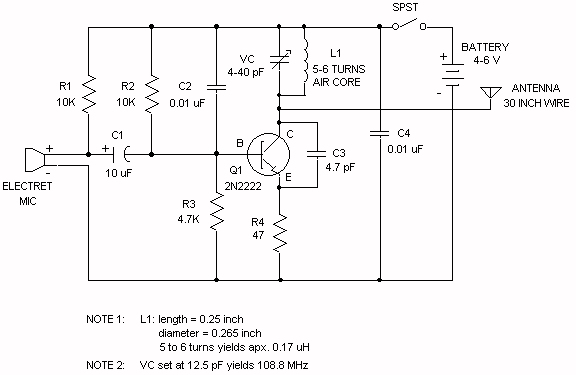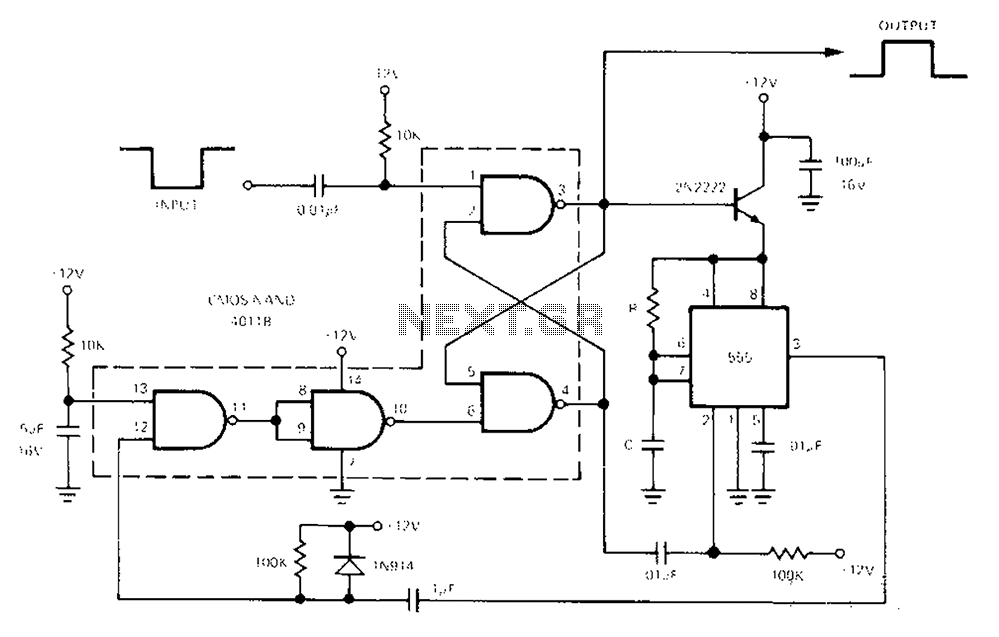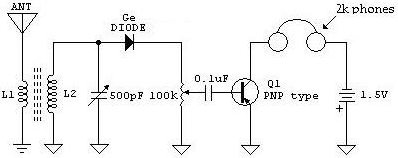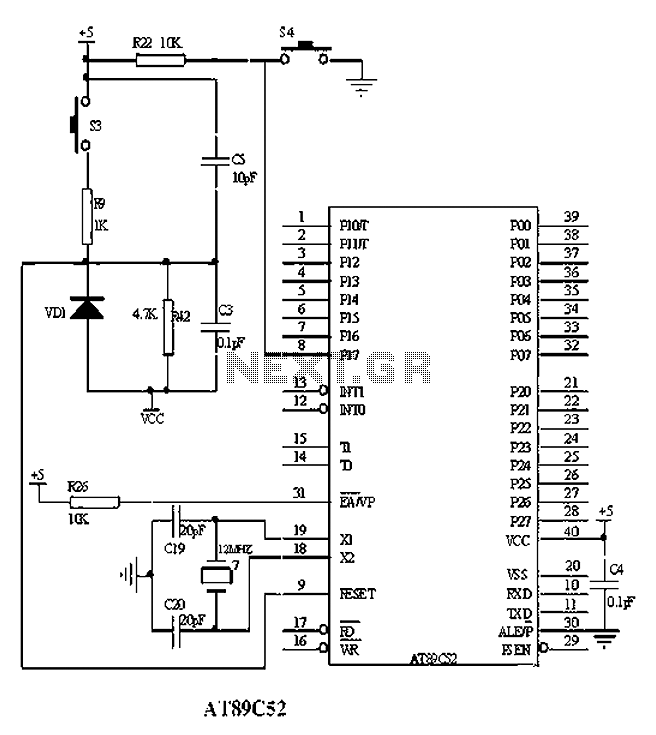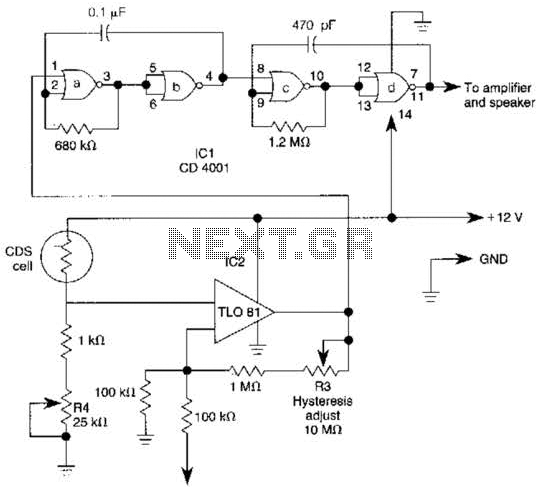
digital counter circuit
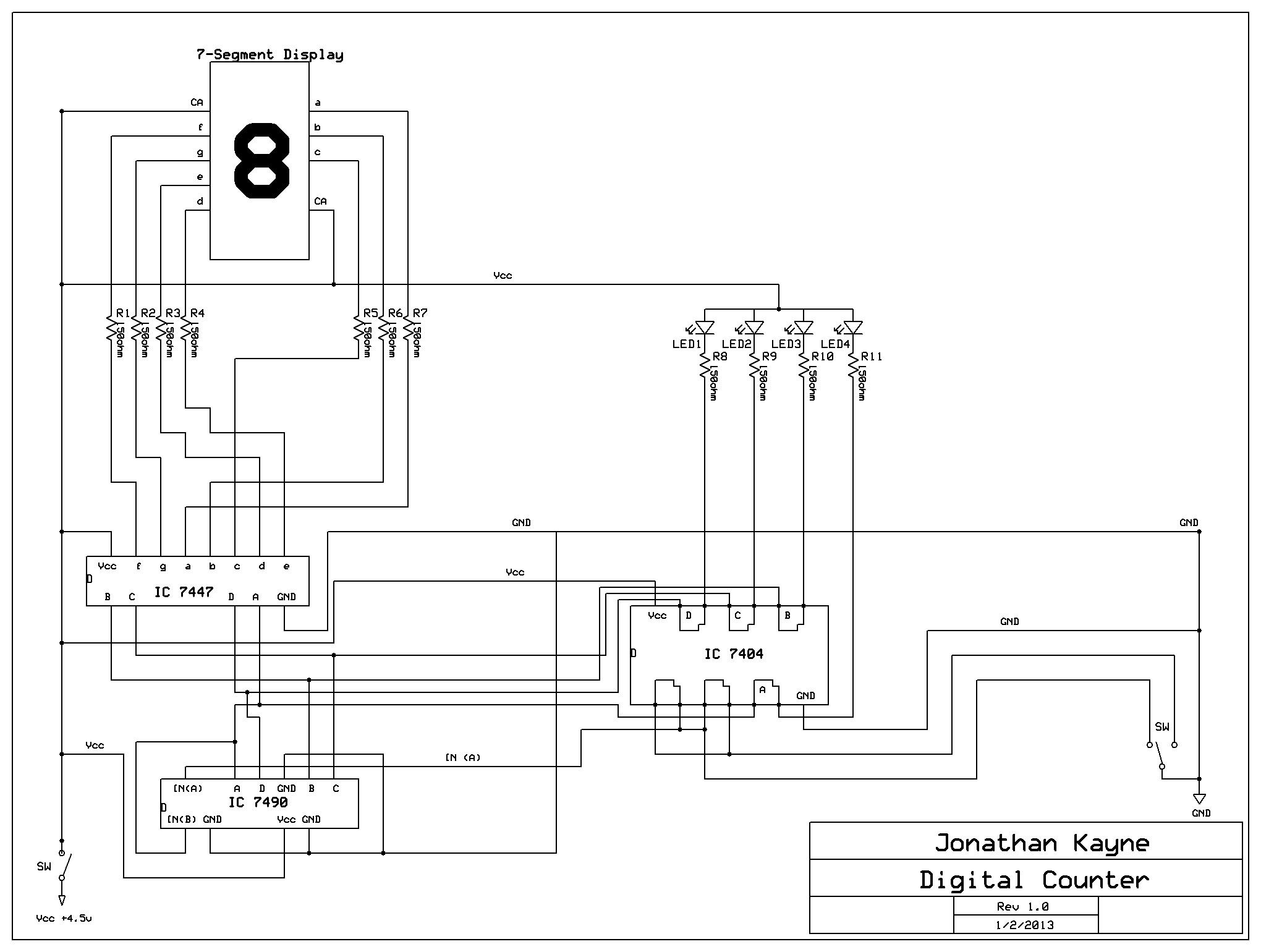
The Digital Counter Circuit is an electronic project that converts digital numbers (0-9) to binary (0-1). For those interested in understanding binary code, a PowerPoint presentation on the topic is available. Below are the parts list, schematic, and additional information on how to build the circuit. The total cost for components ranges from $20 to $30, depending on tax and shipping. Parts can be sourced from Jameco Electronics and RadioShack. A 5V battery holder is required; a 4-compartment battery holder can be adapted to hold three batteries by soldering wires to the ends of one compartment. An example is a 4-D cell holder, modified by soldering and gluing a nail to one end. The item number for this part is #216401, priced at $1.35. To purchase any of the components, click on the respective item number. Building this circuit requires patience and a steady hand, as it involves soldering. When attaching wires to the pins, first solder the pins to the perfboard, then position the wire tip against the pad while the solder is still molten. Hold the wire in place until the solder cools. For three-way connections, create a solder bridge between the connections. Most connections involve the four binary code lines (A, B, C, D) between the three integrated circuits (ICs). It is advisable to select a location on the perfboard to solder each of the three wires to three adjacent pads and then solder-bridge them together. In the IC 7404, four of the pins are utilized to prevent a "bounce" effect. This is achieved by creating an RS NOR latch by connecting two inverters in series, where the output of one inverter is connected to the input of the other.
The Digital Counter Circuit employs a series of integrated circuits (ICs) to facilitate the conversion of decimal numbers into their binary counterparts. The primary component, the IC 7404, contains six independent inverters, which can be utilized to create the necessary logic gates for the counter. The circuit operates by receiving a decimal input through a set of switches or buttons, which then triggers the ICs to output the corresponding binary signal.
The design includes a power supply section, typically a 5V battery or DC power supply, which is connected to the circuit through a battery holder. The battery holder can be configured to accommodate either three AA or D cell batteries, ensuring a stable voltage supply for the components. The perfboard serves as the base for mounting the components and making the necessary connections.
Soldering techniques are critical for ensuring reliable connections. When soldering, it is important to heat the pad and wire simultaneously, allowing the solder to flow and create a solid joint. The use of solder bridges is essential for connecting multiple wires to a single point without overcrowding the pads. Proper spacing and organization on the perfboard can help prevent shorts and improve the overall functionality of the circuit.
The RS NOR latch configuration within the circuit is crucial for debouncing the inputs, which helps eliminate false triggering caused by mechanical bounce when switches are pressed. This configuration allows for stable and accurate counting, making it ideal for applications where precise binary representation of decimal numbers is required.
Overall, the Digital Counter Circuit is a valuable project for those looking to enhance their understanding of digital electronics and binary coding. The combination of practical soldering skills and theoretical knowledge of digital logic will provide a comprehensive learning experience.The Digital Counter Circuit is an electronic project that converts digital numbers (0-9) to binary (0-1). If you want to understand binary code, please click on "Binary Code PPT" to view a PowerPoint on Binary Code.
Below is the Parts List, Schematic, and other information on how to build it. It will cost somewhere between $20 & $30 depending on t ax and shipping. I bought all the parts from Jameco Electronics and RadioShack. 4. 5V Battery Holder (You can get a 4 compartment battery holder and solder a wire to 2 ends on 1 compartment to make it hold 3 batteries. I used a 4-D Cell holder and soldered and glued a nail to 1 end) # 216401 $1. 35 If you want to get any of the parts, click on the item number to go purchase it from the manufacturer.
To build this, it will take a lot of patience and a steady arm and will involve soldering. When soldering the wires to the pins, first solder the pins to the perfboard then put the tip of the wire against the pad while the solder is still melted. Hold the wire down until the solder cools. If you have a 3 way connection, make a solder-bridge between the connections. Most of these are from the 4 Binary Code lines (A, B, C, D) between the 3 IC`s. I recommend that you find a spot on the perfboard, solder each of the 3 wires down to 3 adjacent pads, & solder-bridge them together.
On the IC 7404, 4 of the pins are used to prevent a "bounce" effect from happening. To do this, you make a RS NOR latch by connecting the 2 inverters in series (the output of one is connected to the input of another. ) 🔗 External reference
The Digital Counter Circuit employs a series of integrated circuits (ICs) to facilitate the conversion of decimal numbers into their binary counterparts. The primary component, the IC 7404, contains six independent inverters, which can be utilized to create the necessary logic gates for the counter. The circuit operates by receiving a decimal input through a set of switches or buttons, which then triggers the ICs to output the corresponding binary signal.
The design includes a power supply section, typically a 5V battery or DC power supply, which is connected to the circuit through a battery holder. The battery holder can be configured to accommodate either three AA or D cell batteries, ensuring a stable voltage supply for the components. The perfboard serves as the base for mounting the components and making the necessary connections.
Soldering techniques are critical for ensuring reliable connections. When soldering, it is important to heat the pad and wire simultaneously, allowing the solder to flow and create a solid joint. The use of solder bridges is essential for connecting multiple wires to a single point without overcrowding the pads. Proper spacing and organization on the perfboard can help prevent shorts and improve the overall functionality of the circuit.
The RS NOR latch configuration within the circuit is crucial for debouncing the inputs, which helps eliminate false triggering caused by mechanical bounce when switches are pressed. This configuration allows for stable and accurate counting, making it ideal for applications where precise binary representation of decimal numbers is required.
Overall, the Digital Counter Circuit is a valuable project for those looking to enhance their understanding of digital electronics and binary coding. The combination of practical soldering skills and theoretical knowledge of digital logic will provide a comprehensive learning experience.The Digital Counter Circuit is an electronic project that converts digital numbers (0-9) to binary (0-1). If you want to understand binary code, please click on "Binary Code PPT" to view a PowerPoint on Binary Code.
Below is the Parts List, Schematic, and other information on how to build it. It will cost somewhere between $20 & $30 depending on t ax and shipping. I bought all the parts from Jameco Electronics and RadioShack. 4. 5V Battery Holder (You can get a 4 compartment battery holder and solder a wire to 2 ends on 1 compartment to make it hold 3 batteries. I used a 4-D Cell holder and soldered and glued a nail to 1 end) # 216401 $1. 35 If you want to get any of the parts, click on the item number to go purchase it from the manufacturer.
To build this, it will take a lot of patience and a steady arm and will involve soldering. When soldering the wires to the pins, first solder the pins to the perfboard then put the tip of the wire against the pad while the solder is still melted. Hold the wire down until the solder cools. If you have a 3 way connection, make a solder-bridge between the connections. Most of these are from the 4 Binary Code lines (A, B, C, D) between the 3 IC`s. I recommend that you find a spot on the perfboard, solder each of the 3 wires down to 3 adjacent pads, & solder-bridge them together.
On the IC 7404, 4 of the pins are used to prevent a "bounce" effect from happening. To do this, you make a RS NOR latch by connecting the 2 inverters in series (the output of one is connected to the input of another. ) 🔗 External reference
